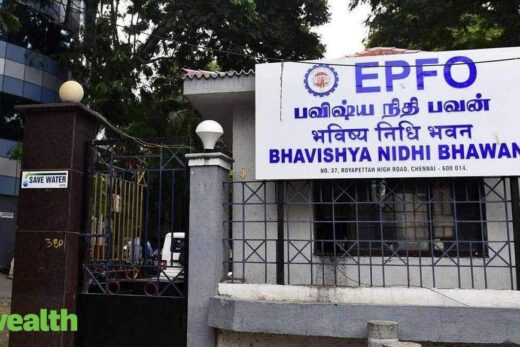What do you hear from the market? What cues are you taking from it?
We not only hear what the market says, we understand it more by experiencing the market. We have 55 product lines in 18 market segments. We have a fair view about how different market segments are operating and how demand is developing for the different product lines. April and May were robust months for us on the order side. We have noticed orders for our product and services on a broader basis.
While the infrastructure story has grown multi-fold, we still hear of execution delays. What are the current challenges you are grappling with, especially with a strong second Covid wave?
The second wave surprised everybody. Administration as well as businesses got impacted in many ways on the private side as well as on the business side. Our priority during the second wave was the health of our employees, their families, our contractors and everybody associated with us and the business took a backseat as the severity of the Second Wave was extremely high.
We have passed that and not only us, I am sure all the corporates across the country have done their bit to take care of their employees and their families and now the focus forward is vaccination so that in case of a Third Wave, we are much better prepared.
Fortunately the second wave had not led to a very big disruption in plants’ operations across the sector. How were you prepared this time in terms of the high growth segments — data centres, renewable and electronics?
Most of these segments which are doing very well. The marketplace requires our product and services which are properly finished. Sometimes the customers require our help and we provide help remotely most of the time. These segments in the current year accounted for about 40% of our ordering. The demand has been quite robust.
What are the segment-wise revenues as well as order inflows in robotics, discrete automation, motion, electrification as well as process automation?
Electrification and motion businesses were very steady throughout the year. After the first wave, they were the quickest to pick up. We continue to grow in that area which has been quite steady in terms of orders, revenues and cash generation. Last year robotics was impacted mainly because the automotive sector was not strong at that time. But we diversified into a new market segment, namely in electronics or FMCGs and others, as there was a very good uptake of robotics automation in those areas.
Our order intake in robotics and automation has really picked up this year. We are doing some very large projects like say Ola’s electric scooter project. We are automating the complete plant. Also other large electronics manufacturing facilities are coming. I am not at liberty to name it because we are under NDA. We do see good uptake of robotics automation and also FMCG companies, especially in material handling. There again we are finding very good uptake of robotics automation solutions. As the automotive sector revives, there will always be a good captive demand in that segment and also the auto ancillaries.
When it comes to process automation, last year after the first wave, it was slow to pick up but in the first quarter, we had a good uptake in the process automation area as well because we supply the core sector with our offerings in the process automation and we are seeing some sense of revival there as well. Definitely it is better than what it was last year.
Do you think the impact of commodity price inflation on margins is expected to be limited? Most order barring process automation which is 20% of your sales, are short term in nature. How are you trying to balance and mitigate the raw material cost inflation?
When it comes to the supply chains, there are two issues. One is the availability and the other is the price. The supply chain in products like semiconductors and certain types of plastics is squeezed right now but thankfully, ABB is a global company and we are part of the global supply chain. We are doing all we can to ensure that the availability of the components and products are available to our customers.
We have alternate strategies to be able to serve the demand and the commitment towards our customers. Cost has increased, especially in certain product lines. We use copper, steel and other products which are the by-products of commodities. There is an increase in those prices but we are executing those contracts at the prices we had committed to the customers. The new order intake will have those price increases factored in so that is how we are dealing with it.
I understand that your company is very actively focussing on ESG intently and has introduced a comprehensive 10 point EGS plan as well. Could you share that with us?
It is something which we have learnt as a practice. I as an individual as well as my management team and our global leaders have learnt that ESG agenda really teaches the organisation to be very disciplined and also very careful in terms of how to take care of the environmental impact and the social impact around our facilities and how to bring about governance in the company so that all the stakeholders interests are protected.
It is a great opportunity for us, even more than what we were doing before. One pledge that we have taken here in India is that we will convert all our locations into green locations. We have done a detailed mapping of what needs to be done to move the current level of score to the level of score wherein we get gold or platinum certification.
We are looking into waste management, water consumption, generation of the electricity through renewable means and we are making investments. We are very sure that these investments will pay back.
On the social side, we spend our CSR allocation 100% and that has been our track record for the last six years at least. When it comes to the Covid situation, lots of NGOs could not be that active in the marketplace to help the communities but we continued to push as much relief we could send and participated in providing Covid relief to the hospitals close to our locations.
When it comes to governance, we are a listed company and we have 50% female board members and 50% male board members, ensuring that we have a good diversity. We are proud of running a very strong governance agenda
Your cash position has improved further. At the end of first quarter, your cash position was at about Rs 2,530 crore plus 14.5%. Is it going to get better from here?
Given how ABB has structured itself over the years, we have had divestment of certain businesses. We see a robust cash cycle running for us. Despite Covid, we ended 2020 with 40% higher cash than the previous year. We expect even better growth by the end of this year.
What is the company’s long term strategy and what is the message that you would like to give to your shareholders?
Our long term strategy is that as a multinational company with operations in 100 countries, India is a very important place to do business for the group. We have been manufacturing in this country for the last 70 years and all of our 18 business divisions are manufacturing globally and increasing their localisation every year. That means we are setting up more and more supply chains in India and many of our business divisions have started exporting out of the country apart from delivering to our customers domestically because that is our
.
What I can tell our stakeholders is that we are really very long on India, we believe in India and we will continue to invest in terms of bringing the best technology for our industrial as well as infrastructure and utility customers. We are pretty good in terms of creating a supply chain in the country to meet the price expectations of the market. Also, since our quality operations is quite good, our global teams also have a lot of confidence to buy products and services from our plants for other markets. So that is the kind of picture I can paint for you and we will grow as India grows going forward.



